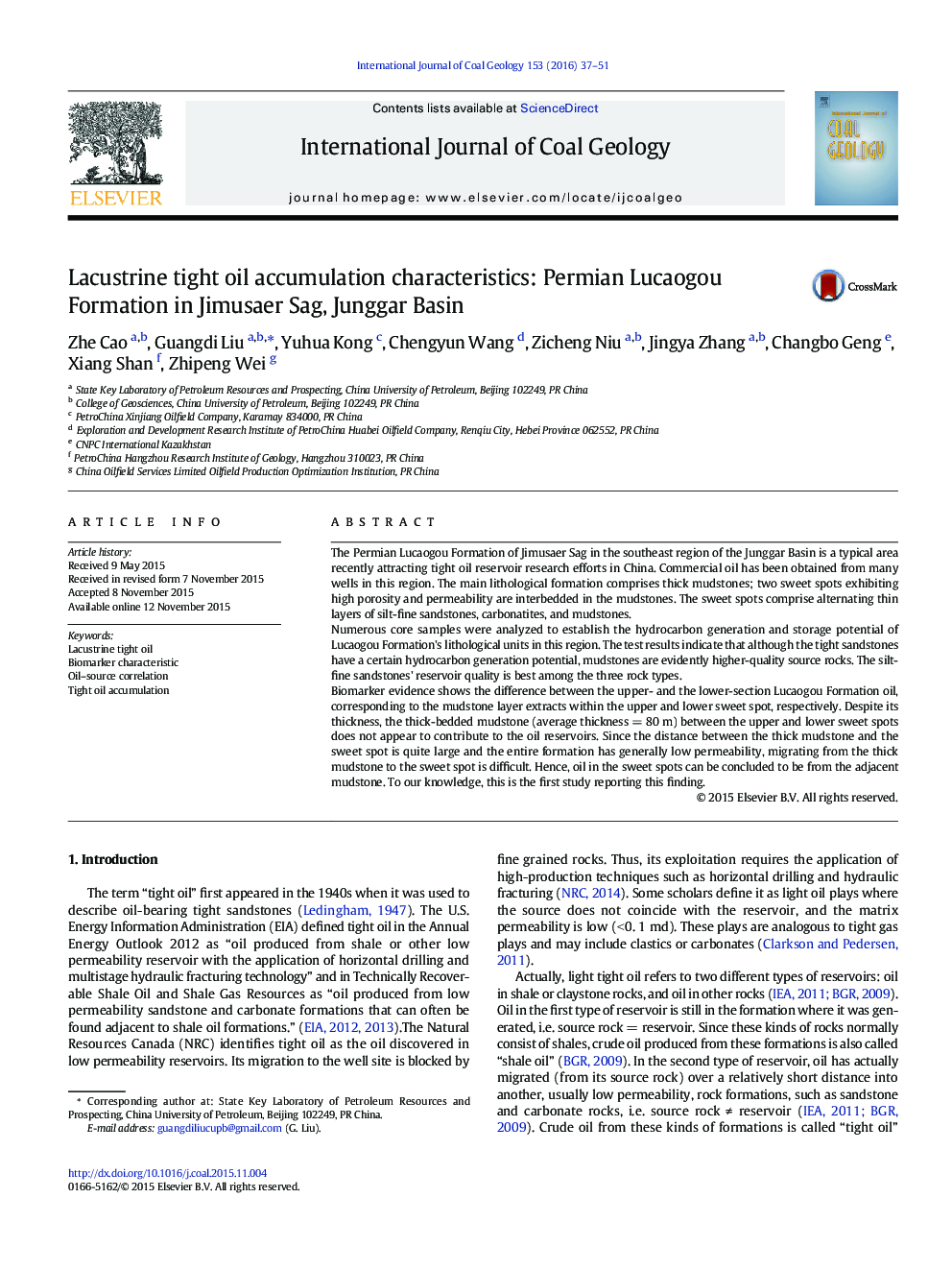| کد مقاله | کد نشریه | سال انتشار | مقاله انگلیسی | نسخه تمام متن |
|---|---|---|---|---|
| 1752820 | 1522548 | 2016 | 15 صفحه PDF | دانلود رایگان |
• A case of lacustrine basin tight oil reservoir is shown.
• Hydrocarbon generation and storage potential of Lucaogou Formation's lithological units is tested.
• Oil and source rock correlation in Lucaogou Formation is shown clearly.
• Provide geological and geochemical evidences for accumulation characteristic of tight oil reservoir
The Permian Lucaogou Formation of Jimusaer Sag in the southeast region of the Junggar Basin is a typical area recently attracting tight oil reservoir research efforts in China. Commercial oil has been obtained from many wells in this region. The main lithological formation comprises thick mudstones; two sweet spots exhibiting high porosity and permeability are interbedded in the mudstones. The sweet spots comprise alternating thin layers of silt-fine sandstones, carbonatites, and mudstones.Numerous core samples were analyzed to establish the hydrocarbon generation and storage potential of Lucaogou Formation's lithological units in this region. The test results indicate that although the tight sandstones have a certain hydrocarbon generation potential, mudstones are evidently higher-quality source rocks. The silt-fine sandstones' reservoir quality is best among the three rock types.Biomarker evidence shows the difference between the upper- and the lower-section Lucaogou Formation oil, corresponding to the mudstone layer extracts within the upper and lower sweet spot, respectively. Despite its thickness, the thick-bedded mudstone (average thickness = 80 m) between the upper and lower sweet spots does not appear to contribute to the oil reservoirs. Since the distance between the thick mudstone and the sweet spot is quite large and the entire formation has generally low permeability, migrating from the thick mudstone to the sweet spot is difficult. Hence, oil in the sweet spots can be concluded to be from the adjacent mudstone. To our knowledge, this is the first study reporting this finding.
Journal: International Journal of Coal Geology - Volume 153, 1 January 2016, Pages 37–51
